You know the grind: juggling change requests, chasing incidents, and somehow keeping a lid on AWS accounts, Azure VMs, and those “mystery” on-prem servers nobody admits spinning up. No matter how tight your ITIL process looks in Confluence, something always slips — asset inventory lags behind, change management feels like controlled chaos, and your knowledge base? More folklore than fact.
But here’s the secret sauce: ITIL CMDB. When you’ve got a CMDB ITIL setup that actually tracks every config, every dependency, and every lifecycle event, you stop firefighting and start running ops like a command center.
Here’s what we’re diving into:
- IT Asset Management
- Change Management
- Risk Management
- Knowledge Management
- Problem Management
- Incident Management
- Service Request Fulfillment
Ready to see how ITIL CMDB software can simplify hybrid chaos? Let’s get into real-life, boots-on-the-ground insights from the trenches.
How ITIL and CMDB Work Together?
Anyone who’s spent a week in cloud ops knows ITIL is less of a “best practices” manual and more of a survival guide. But, no matter how much you automate your change requests, track incidents, or chase asset sprawl, the missing link is almost always visibility. You need a single source of truth that connects your asset chaos to your process flows — right down to the sneaky configs hiding behind someone’s custom Lambda.
That’s where CMDB in ITIL isn’t just a checkbox. It’s the heartbeat. ITIL CMDB software becomes your ops command center — pulling together every CI: your AWS Lambda functions, GCP firewalls, on-prem DB clusters, container images, SaaS subscriptions, and the API connectors that glue it all together.
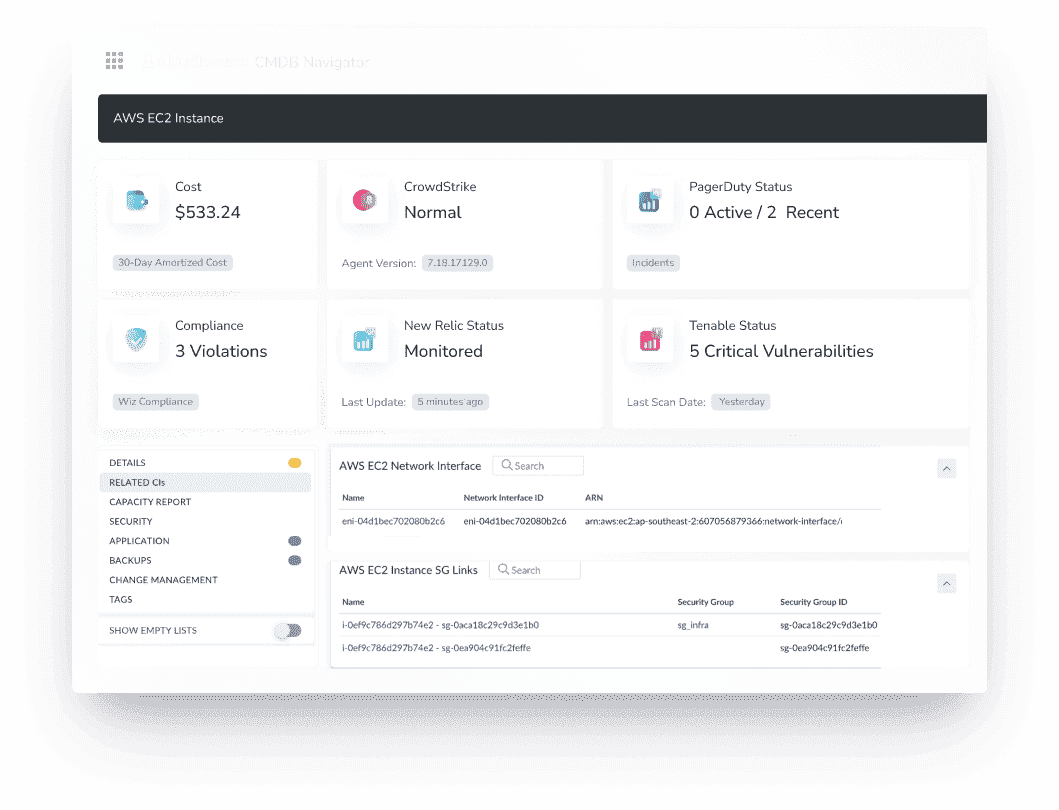
IT assets inventory in Cloudaware. Schedule a demo to see it live.
Suddenly, you’re not just tracking assets; you’re seeing relationships, dependencies, and the real business impact when something blips.
Here’s how the dynamic duo delivers for you in the trenches:
- Change Management. Every code push, policy tweak, or cloud-native update? Auto-logged, versioned, and mapped to the affected CIs, so you can roll back or audit without the panic.
- Asset Management. Real-time status on every VM, hardware lifecycle, and even shadow IT — no more guesswork or spreadsheet archaeology.
- Incident & Risk Management. Drill down to the root cause in seconds, tracing incidents through relationships (goodbye, war room chaos).
- Configuration Management. See every attribute and connection — no more playing detective across accounts and environments.
What’s wild is how ITIL 4 wants config info to be “accurate, up-to-date, and easy to use.” With a solid ITIL CMDB, you actually get that. It powers impact analysis, cost breakdowns, and compliance audits — across all your clouds and data centers. You’re not just keeping the lights on; you’re running the whole show from a single, always-up-to-date dashboard.
Ready to see how the CMDB transforms your everyday ITIL processes? Stick around — because the next part is where it gets seriously actionable.👇
Why CMDB Is a Key to Better Service Management in ITIL
ITIL 4 is dead serious about service configuration management — it’s all about having config data that’s actually useful and alive, not some stale spreadsheet last updated three migrations ago. That’s where a well-implemented ITIL CMDB steps in and changes your entire game.
When your CMDB ITIL isn’t just a dusty asset list but a real operational hub, you’re pulling live data straight from AWS, Azure, your k8s clusters, even that grumpy old on-prem VMware farm — and feeding it right into your ITSM pipelines. Now your insights are accurate, timely, and visible where they matter.
With solid ITIL CMDB software, here’s what this looks like for you on the ground:
- Impact analysis. Got a change hitting an EKS cluster or a shared SQL instance? Your CMDB instantly maps the blast radius across all linked CIs, so you know what apps, services, and even IAM roles could tank.
- Cause-and-effect. When your 2am PagerDuty alert fires, you’re not guessing — your CMDB shows exactly which config change on which CI triggered the chaos.
- Risk analysis. Spot exposed S3 buckets, expired certs, or stale security groups tied to production workloads before your next audit scramble.
- Cost allocation. See costs rolled up by CI, environment, or team. No more chasing who forgot to decomm those zombie RDS clusters.
- Availability planning. Because when it’s time to test failover, you want a map that shows what actually depends on that load balancer — not the best guess.
And yeah, this is clutch when you’re juggling thousands of assets across hybrid multi-cloud. I’ve watched teams live in constant change panic — manually reconciling YAML files, old CMDB exports, and surprise Excel dumps from finance. Every minor update turned into a multi-team scavenger hunt.
But once they dropped a CMDB in ITIL approach that included automated discovery, daily data verification, and tight integrations with their CI/CD + ITSM stack? Suddenly change approvals were faster, impact assessments were solid, and risk went way down.
Want a snapshot from the real world? Coca-Cola rolled out Cloudaware’s CMDB across their sprawling AWS, Azure, and on-prem universe.
Within months, they nailed down a 41% drop in compliance policy violations and improved tagging accuracy by 53%, which also turbocharged their cost allocation game.

An element of the tagging report in Cloudaware. Schedule a demo to see it live.
No more last-minute asset hunts before board reviews.
Mikhail Malamud, General manager at Cloudaware:
Read also: 10 Steps to IT Asset Management Strategy For Multi Cloud Setup
How Your ITIL Change Management evolves with CMDB
When you’re the one herding thousands of EC2s, Azure SQL DBs, on-prem firewalls, and IAM roles across multiple org units, every single change feels like stepping onto a tightrope with a blindfold. ITIL change enablement is supposed to keep you balanced, but we both know it’s a circus act half the time.
The whole point? Cut down disruption. Because yeah, we’ve all felt the sting of that “minor patch” that accidentally torpedoed half your production workloads.
But here’s where CMDB ITIL absolutely flexes. With a solid ITIL CMDB software, you’ve basically got the brain of your infrastructure mapped — from elastic load balancers down to that dusty old Windows VM someone forgot to decommission.
👉 Impact analysis. Planning a tweak to a Kafka cluster or migrating an RDS instance? Your CMDB in ITIL shows exactly which dependent microservices, S3 buckets, or even downstream ERP integrations will shudder. Coca-Cola dialed this in so well they cut downtime by 30% on changes. No last-minute panic attacks, just controlled moves.
👉 Cause and effect analysis. Ever rolled back a change at 2 AM because nobody could figure out why latency shot up? With CMDB ITIL, you can trace every update down to the CI — whether that’s a Redis cache or a security group tied to critical APIs. NASA slashed troubleshooting time by 40% just by having these breadcrumbs:
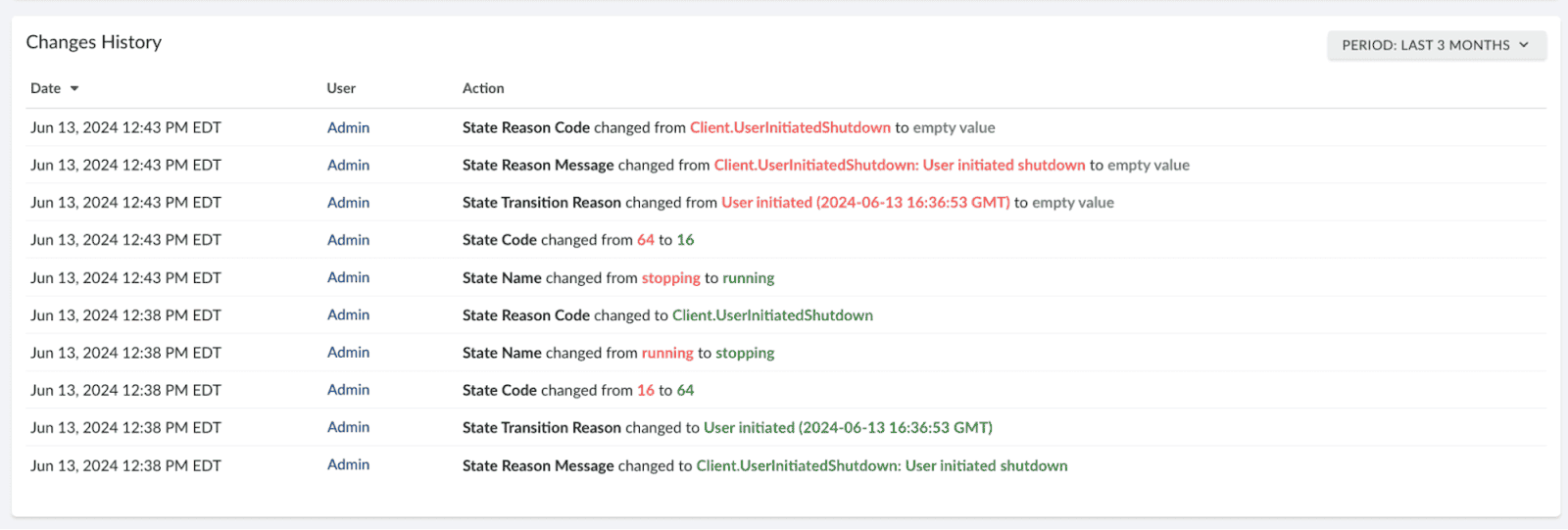
Change history in Cloudaware
👉 Risk analysis. Let’s face it, hybrid environments mean hidden landmines. That patch to your AD connector could ripple out to your SSO pipelines, your custom analytics stack, even your HR onboarding automation.
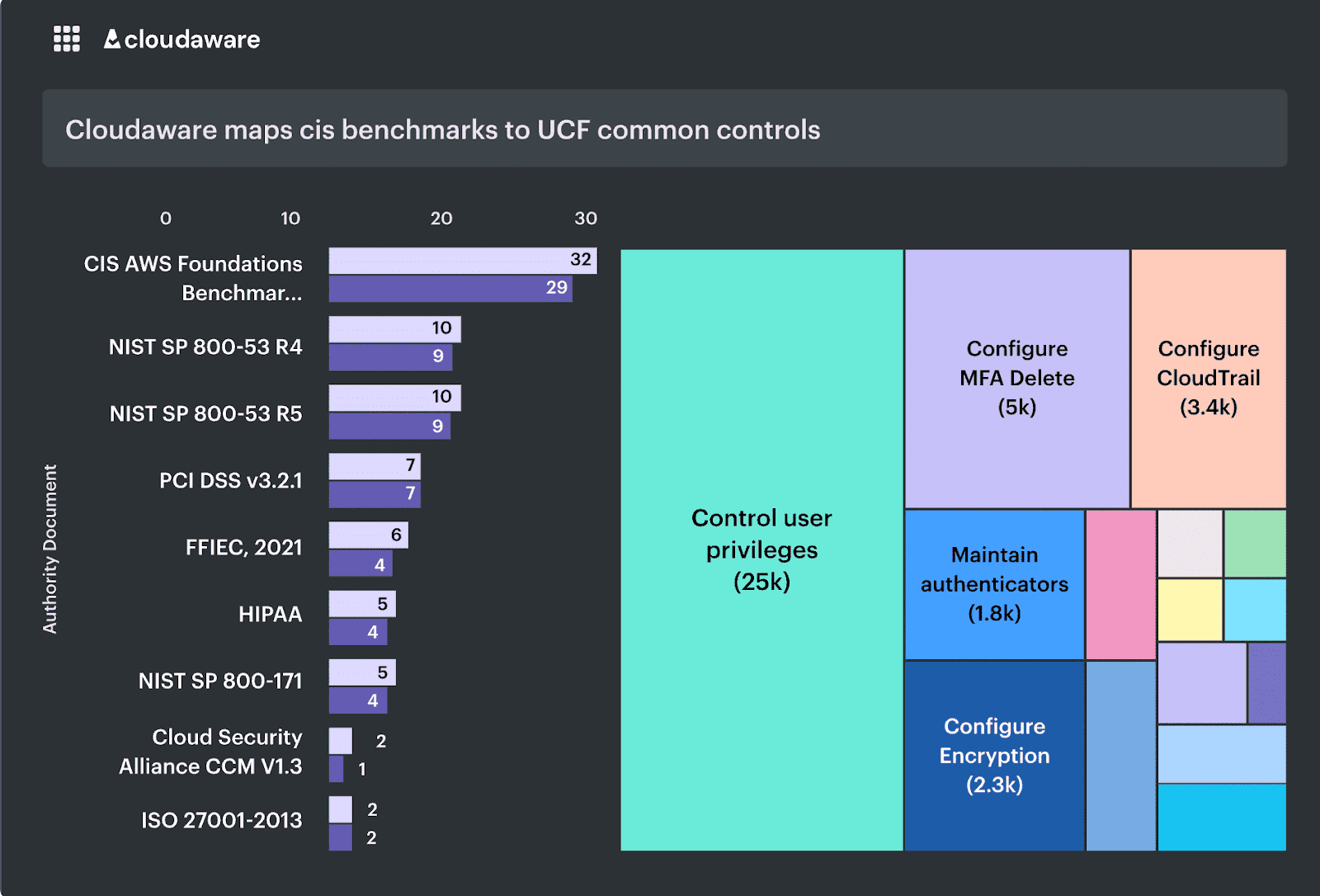
An element of the risk management report in Cloudaware. Schedule a demo to see it live.
A CMDB ITIL setup acts like a live risk radar, so Charles Schwab knocked down risk incidents by 50% after leaning on it.
👉 Cost allocation. Changes eat money. Want to track it cleanly? The CMDB ties costs to specific assets or services — say, your Kubernetes namespaces or EFS mounts.
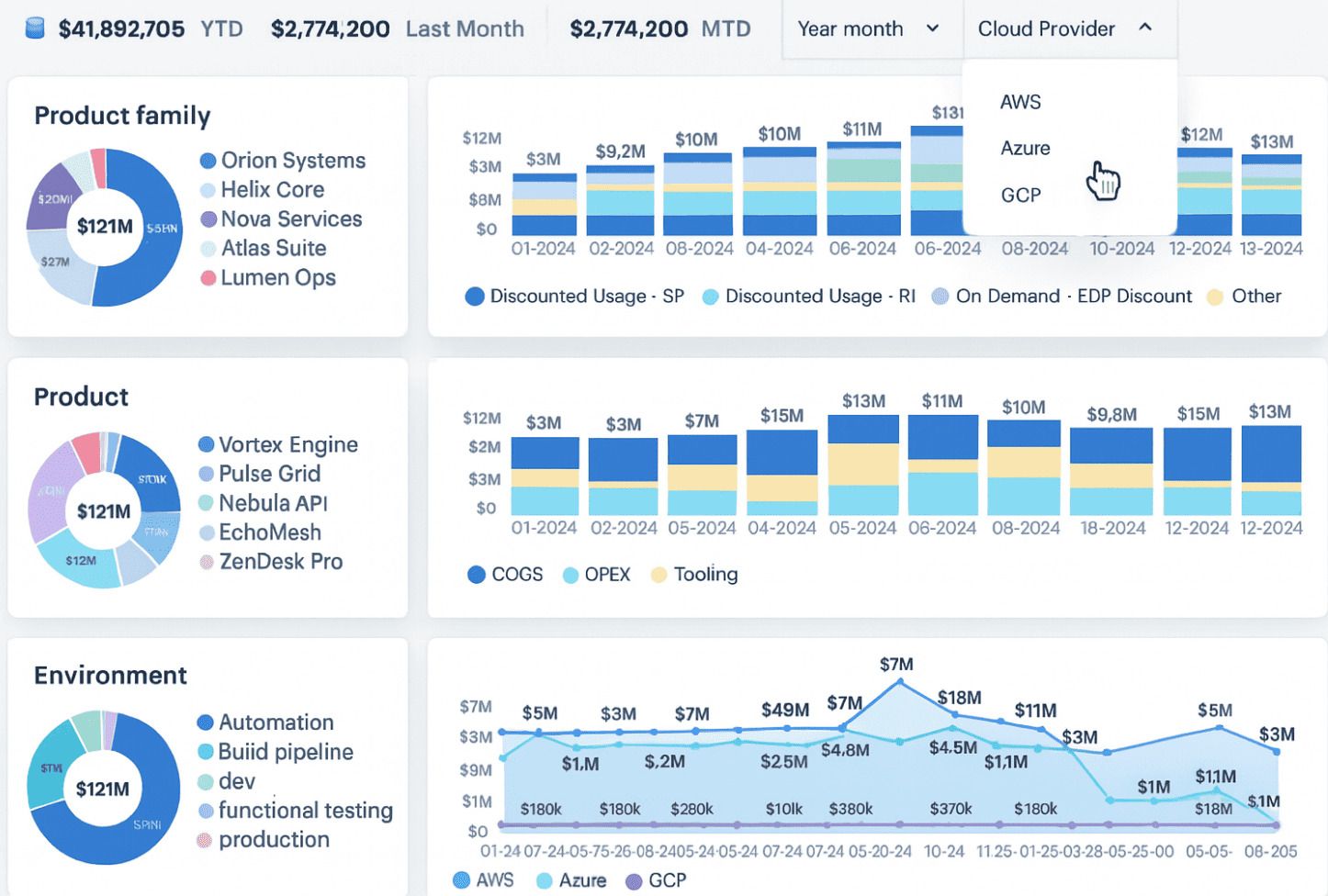
FinOps dashboard with element so cost allocation in Cloudaware. Schedule a demo to see it live.
ServiceChannel saw a 20% cut in wasted spend by following the money right in the CMDB.
👉 Availability planning. Nothing kills credibility faster than an unscheduled outage. Before pulling the trigger on that serverless rollout or massive re-tag, Charles Schwab mapped service impacts in their CMDB and upped availability by 25%. Zero surprises, just rock-solid delivery.
This is why Coca-Cola, Schwab, NASA — all heavy hitters juggling gnarly hybrid footprints — aren’t just managing change with ITIL CMDB software, they’re straight-up owning it. Less chaos, sharper root cause insights, tighter cost control, more sleep at night.
Because at the end of the day, CMDB in ITIL isn’t about adding another tool. It’s about giving you — and every CI from your Lambda functions to your Cisco routers — the visibility and accountability to keep your ops humming.
Enhance IT Asset Management
IT Asset Management (ITAM) is all about ensuring that your assets — whether they’re physical servers, software licenses, or cloud services — are tracked from planning to disposal. This means having accurate, reliable information about each asset, at all times.
Your asset register is a great start, but let’s be honest, it’s not exactly a real-time reflection of your infrastructure.
That’s where the CMDB comes in.
CMDB takes things up a notch. It doesn’t just track assets; it connects the dots between those assets and your live production environment. You get the full view of how each asset impacts the rest of your infrastructure. And since a CMDB automatically updates itself as assets change or move, you’re always working with accurate, real-time data.
This is how the CI data looks like in Cloudaware. It shows all the info about it, including related instances.
Let’s look at how this works in the real world 👇
1️⃣ Organizations like Coca-Cola rely on their CMDB to get visibility into all their assets, regardless of where they’re located — whether on-prem, in the cloud, or both. With a CMDB, they were able to automate asset tracking and update their IT asset register with live information, which made managing their assets more efficient.
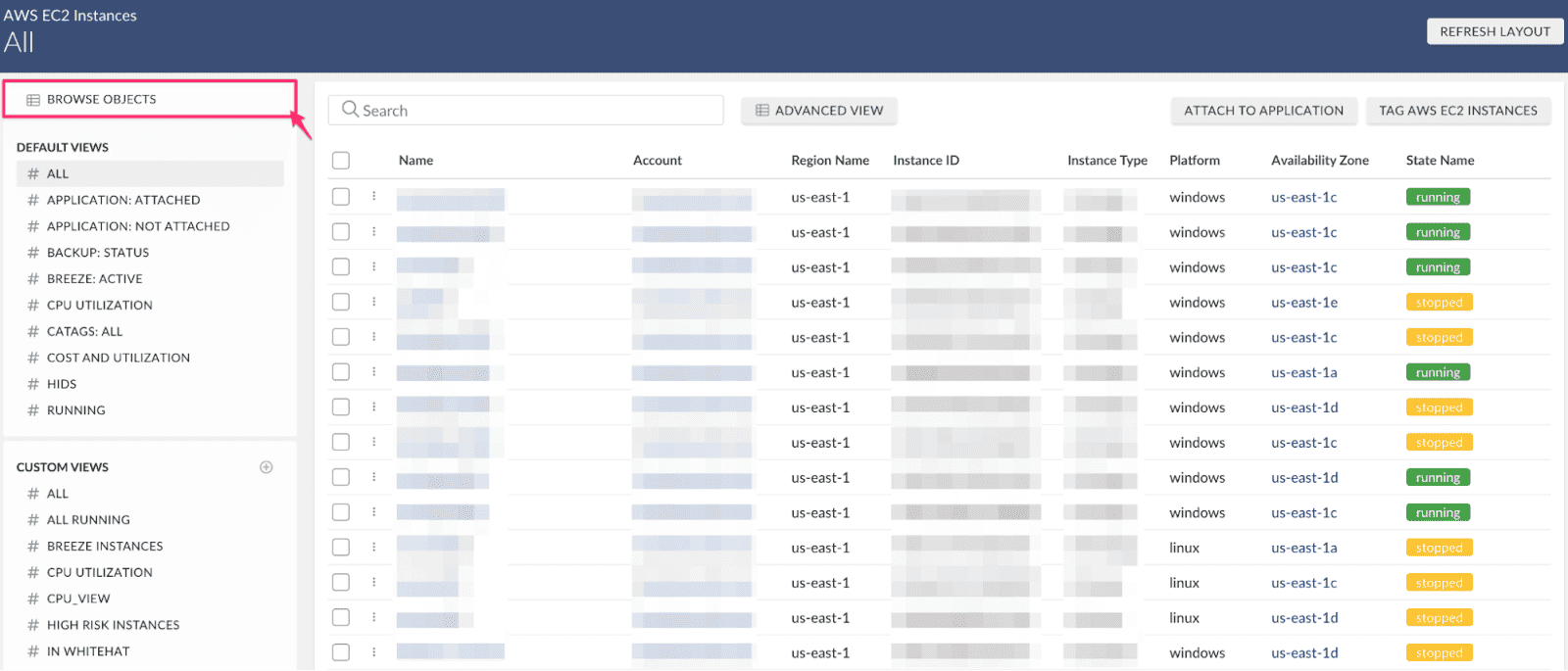
Coca-Cola multi-cloud IT assets visualization in Cloudaware.
The result? A 30% reduction in manual asset tracking errors and a 40% increase in asset utilization. They didn’t just track assets; they maximized their value.
2️⃣ The CMDB gives you a centralized database to store and manage all your CIs and their relationships. This means when you make a change, whether it’s a small configuration tweak or a big infrastructure upgrade, you can easily see how it affects the rest of your environment. ITIL CMDB gives you the confidence to manage change without the headaches of blind spots or surprises.
Here is how change management history looks like in Cloudaware:
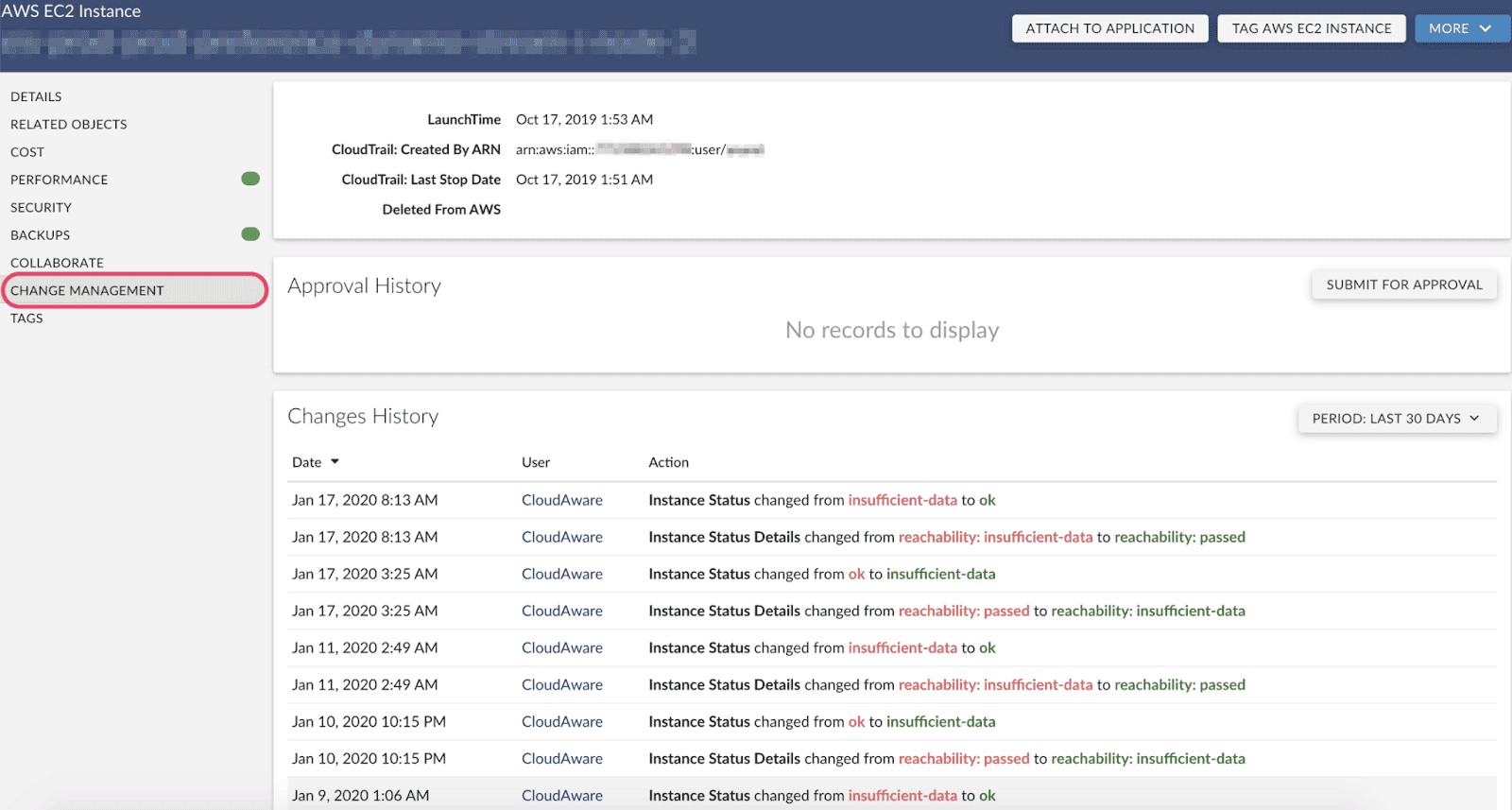
Take Charles Schwab as another example. With their complex infrastructure, they needed a tool to track the relationships between all their CIs — especially when it came to license management. By using their CMDB, they were able to automate license tracking, validate their deployment, and ensure they stayed compliant with contracts.
The result? A more efficient use of resources and fewer compliance headaches.
One of the most crucial areas where the CMDB truly shines is in the lifecycle of IT asset decommissioning. Before you just pull the plug on an asset, you need to know what’s connected to it and what impact that might have on your service or other assets.
3️⃣ Let’s not forget about business value. A CMDB helps organizations stay on top of their IT assets, reduce risks, and cut costs. For example, NASA leveraged their CMDB to manage their assets more efficiently, reducing decommissioning risk by 25% and getting better control over license reuse.
And as we all know, service financial management can be a nightmare if you don’t have accurate data. With a CMDB, you get a clear, up-to-date view of asset costs, helping your business plan budgets with confidence.
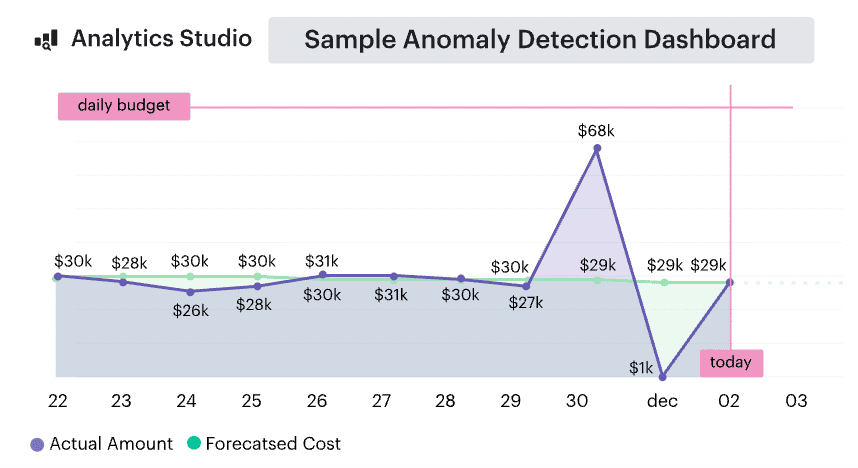
This is an example of the FinOps dashboards Cloudaware provides. Schedule a demo to see it live.
ServiceChannel saw a 20% improvement in financial tracking by utilizing their CMDB to connect financial planning with real-time asset data.
In the end, ITIL gives you the framework, but the CMDB is the engine that keeps it all running.
Read also: What is & How Does Asset Management Work Across Hybrid IT?
How ITIL CMDB Transforms Problem Management
You’re standing in your war room at 2AM, staring at dashboards that look like someone spilled a bag of Skittles.
Alerts are popping on your AWS accounts, your Azure resources are spiking errors, and half your multi-cloud stack’s in the red. You’ve got on-prem boxes, serverless workloads, hundreds of EC2s, dangling EBS volumes, and a few ‘test’ RDS instances someone forgot to kill.
And you’re trying to figure out:
👉 Where did this start?
👉 Which config item blew up?
👉 Who owns this piece of the puzzle?
Sound familiar?
That’s what happens when your ITIL processes are working… but your ITIL CMDB isn’t pulling its weight.
Because let’s be honest: without a solid CMDB in ITIL, problem management is just you playing detective in a haunted house, hoping you don’t step on a trap door
Problem Identification: Pinpointing the Issue
When an incident hits — say your latency spikes on a customer app — your ITIL CMDB is the first place you look. It’s not just a static list; it’s a living map of all your config items (CIs) and how they connect.
With CMDB ITIL in play, you don’t guess if it’s a faulty ALB, a stressed RDS instance, or a flaky DNS record. Your CMDB shows exactly which assets support that app, their current states, and what else they’re tied to.
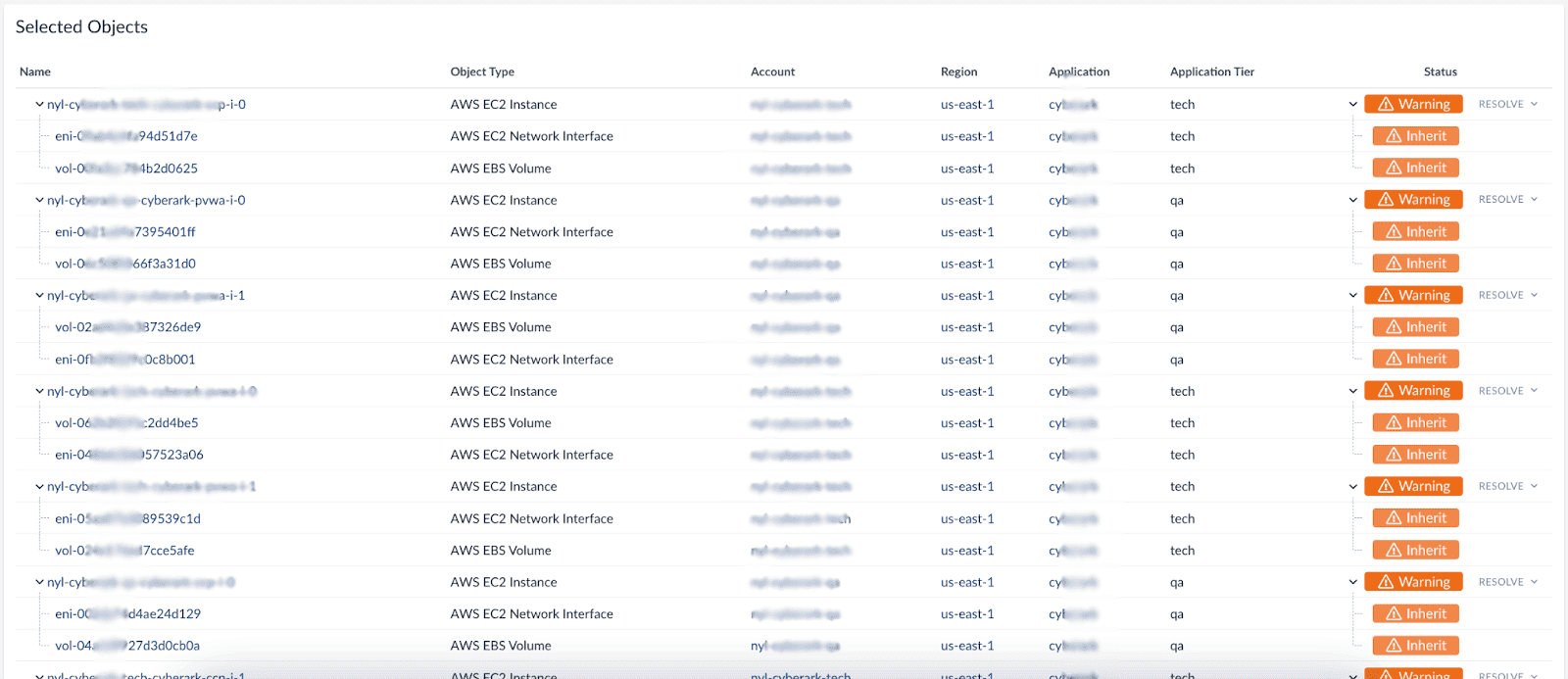
For example, a CMDB might reveal that your us-east-1 Load Balancer is routing to EC2s behind an outdated security group — instantly spotlighting the weak link. Or it flags a misconfigured Azure Function your CI depends on.
Coca-Cola used their ITIL CMDB software this way to cut incident ID time by 40%, because they could trace disruptions back to the precise CI causing trouble.
In short, it’s the difference between stumbling through logs blindfolded and having a real-time blueprint that says, “This CI is failing, here’s what it touches, fix this first.”
Problem Control: Uncovering Root Causes
With an ITIL CMDB software, problem control is no longer guesswork. You get a real-time map of every CI, its dependencies, and its change history. So when an issue hits, you don’t just see the failing asset — you see everything it impacts.
Example: a degraded Kafka node. Without a CMDB, you’d be sifting logs across clusters. With it, you immediately see which microservices depend on that broker, what downstream databases might be starved, and whether it’s tied to a recent patch.
Charles Schwab used their CMDB ITIL to trace a slowdown to a single misconfigured server patch, isolate it, and resolve it 75% faster — avoiding rollbacks that could have taken out half their app stack.
The value? Less trial-and-error. Faster MTTR. Controlled fixes that stop problems at the source, so you don’t trigger three more incidents.
In short: your team spends time executing precise solutions, not hunting root causes across fragmented environments. That’s problem control done right.
Error Control: Fixing the Root Cause
Error control with an ITIL CMDB means you’re not flying blind when rolling out a fix.
Your CMDB shows every related CI in your environment — instance IDs, attached volumes, linked security groups, dependent services, DNS records, even IAM roles. So patching a vulnerable AMI or tightening a firewall rule isn’t a shot in the dark; you see exactly which microservices, API gateways, or replication jobs could break.
At NASA, their CMDB ITIL process maps out all cross-cloud and on-prem dependencies. When they found recurring issues tied to a cloud load balancer config, their team used the CMDB to isolate every connected CI and run targeted changes. The result? They kept 100% uptime during critical launch prep — zero unplanned downtime, zero scramble to rollback.
What does this mean for you?
- You deploy fixes faster, without unintended outages.
- You stop wasting hours tracing blast radius by hand.
- You keep SLAs intact and compliance auditors off your back.
- And you spend your nights at home, not in emergency war rooms.
With solid error control powered by your CMDB, problems don’t just disappear temporarily — they’re surgically removed, with every impact accounted for. That’s how you turn a reactive, always-on-fire ops life into calm, controlled, predictable days.
Read also: Choose an ideal ITAM software: Top 15 asset management tools
Ease your ITIL Knowledge Management with CMDB
Your day’s a circus of change tickets, incident reviews, asset deep dives, and Slack pings about “that one server” nobody can find. You’re already juggling a hybrid zoo of EC2s, Azure Functions, and dusty on-prem boxes tied to that one ancient ERP.
Meanwhile, your ITIL processes are supposed to hold it all together — but your knowledge base? Probably more rumor mill than reliable source.
This is why dialing in your CMDB ITIL matters. Your CMDB is where every CI lives: the VM tags, service owner, business impact, that sneaky lifecycle status.
When your ITIL CMDB software feeds clean data into your SKMS, your Knowledge Management stops being a scavenger hunt. Suddenly, when you’re running impact analysis for a change, tracing incidents, or prepping for an audit, you’ve got the real story.

I’ve seen your world — multiple clouds, hundreds of accounts, thousands of assets. Without a synced, up-to-date CMDB in ITIL, you’re chasing half the puzzle. That means more chasing spreadsheets, pinging five teams to ask if a Lambda is still in prod, or rolling back a change because nobody flagged a downstream dependency.
But when your CMDB actually mirrors your environment — down to last night's autoscaled nodes — your SKMS becomes a power tool. You spot config drift before it torpedoes prod, plan changes without surprise outages, and finally get Knowledge Management that helps instead of hinders.
Most IT teams think their knowledge base is solid — until they realize it’s running on stale, fragmented data. That’s why your CMDB isn’t just nice to have, it’s critical.
Taming Multi-Cloud Beast? Here’s the Only Radar You Need
Running multi-cloud? Then you already know — it’s a full-contact sport.
Between chasing down orphaned EBS volumes, watching your Azure tags turn into a free-for-all, and hoping your last on-prem ESXi host doesn’t die during the next Change Enablement window — yeah, it’s a miracle you still have hair.
Flexera’s got the receipts: 87% of orgs are tangled in multi-cloud. So congrats — you’re in good company, just equally buried in incident tickets.
But here’s the rub: once your infra sprawls across public, private, and that one ancient Solaris box you pretend doesn’t exist, your visibility tanks.
- Who’s touching that S3 bucket tied to billing?
- Which microservice depends on the load balancer you’re about to tweak?
- And when a priority 1 Incident Management call blows up at 2 AM, how fast can you trace which CIs are actually impacted?
That’s why a CMDB ITIL isn’t just a database — it’s your operational radar. With legit ITIL CMDB software in place, your Service Asset & Configuration Management isn’t cobbled together from five stale spreadsheets.
It’s all live: every server, container, DNS record, database cluster, tied to its upstream and downstream buddies.
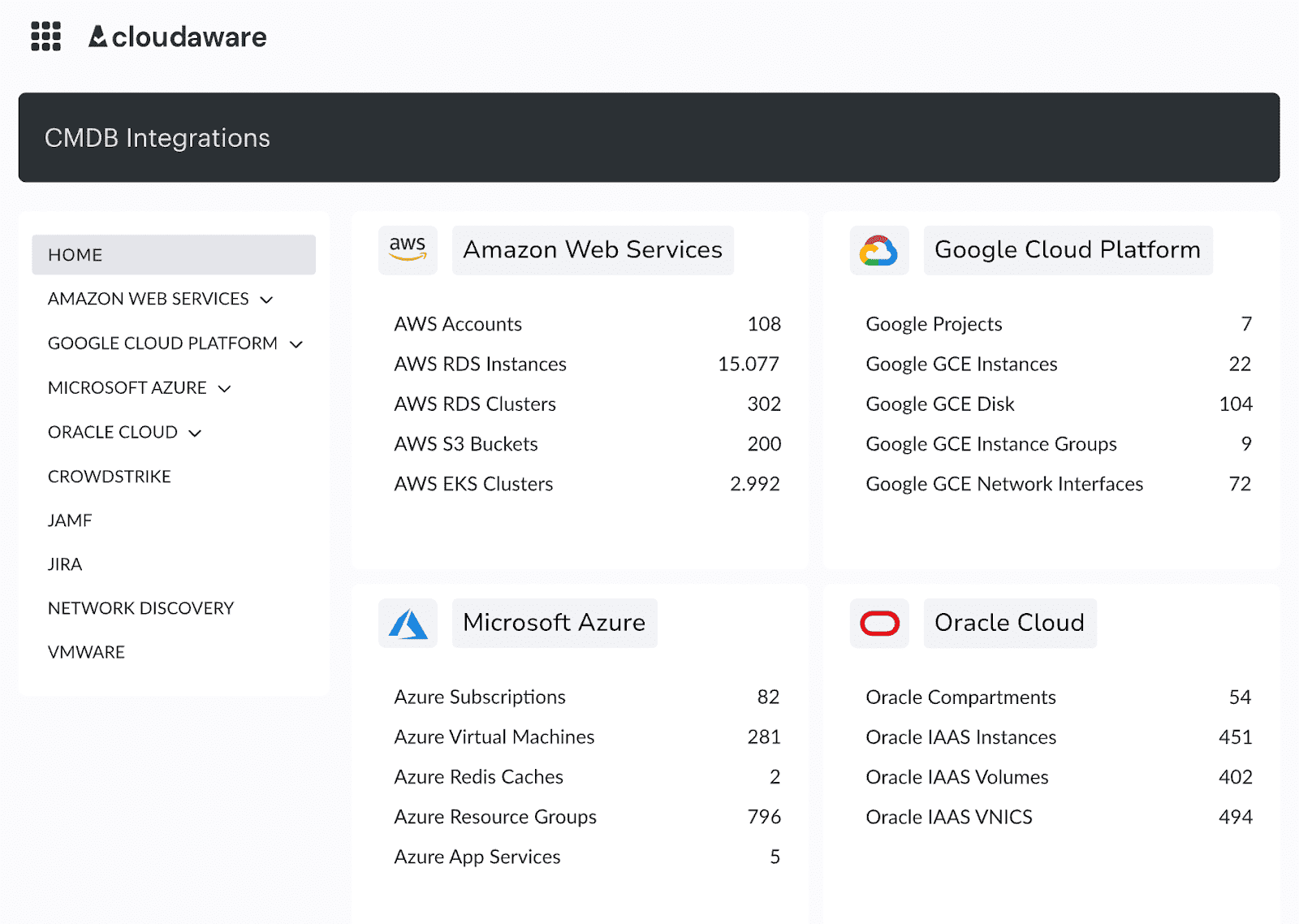
CMDB navigator in Cloudaware. Schedule a demo to see it live.
Real talk:
- Charles Schwab had thousands of assets smeared across AWS, Azure, and on-prem. Before CMDB? Impact analysis was like feeling around in the dark. Now, they can see exactly which services will hiccup before they approve a change.
- Coca-Cola wired up their CMDB in ITIL to untangle hybrid dependencies, cutting downtime by 30% in six months.
- NASA uses theirs to trace incidents back to the exact failing CI, stopping ripple effects before they wreck mission-critical ops.
Picture this: it’s Friday 5 PM. A developer merges a Terraform change. You get a Slack ping from Monitoring — latency is spiking. With your CMDB ITIL, you run a quick impact analysis and see it’s tied to a subnet update that quietly rerouted traffic away from your primary DB cluster. The crisis averted in 10 minutes — not 4 hours later after digging through logs.
This isn’t admin overhead. It’s how you keep your Change Management smart, your Risk Management sharp, and your Incident Management actually manageable. It’s your best chance to turn that hybrid chaos into something you can steer — and yeah, finally get a weekend without the pager going off.
Read also: Software Asset Management for Hybrid DevOps Done Right
Level Up Your ITIL Game with Cloudaware CMDB
Managing a spaghetti bowl of hybrid infra, sprinkled with multi-cloud sauce and leftover on-prem meatballs, is the daily special, right? Keeping AWS org accounts clean, Azure tags sane, tracing ephemeral GCP instances, and then that sneaky old SQL cluster under someone’s desk — it’s all part of the feast. Staying ahead of change windows, asset audits, and never-ending Jira epics needs more than wishful thinking.
That’s why we created Cloudaware’s ITIL CMDB.
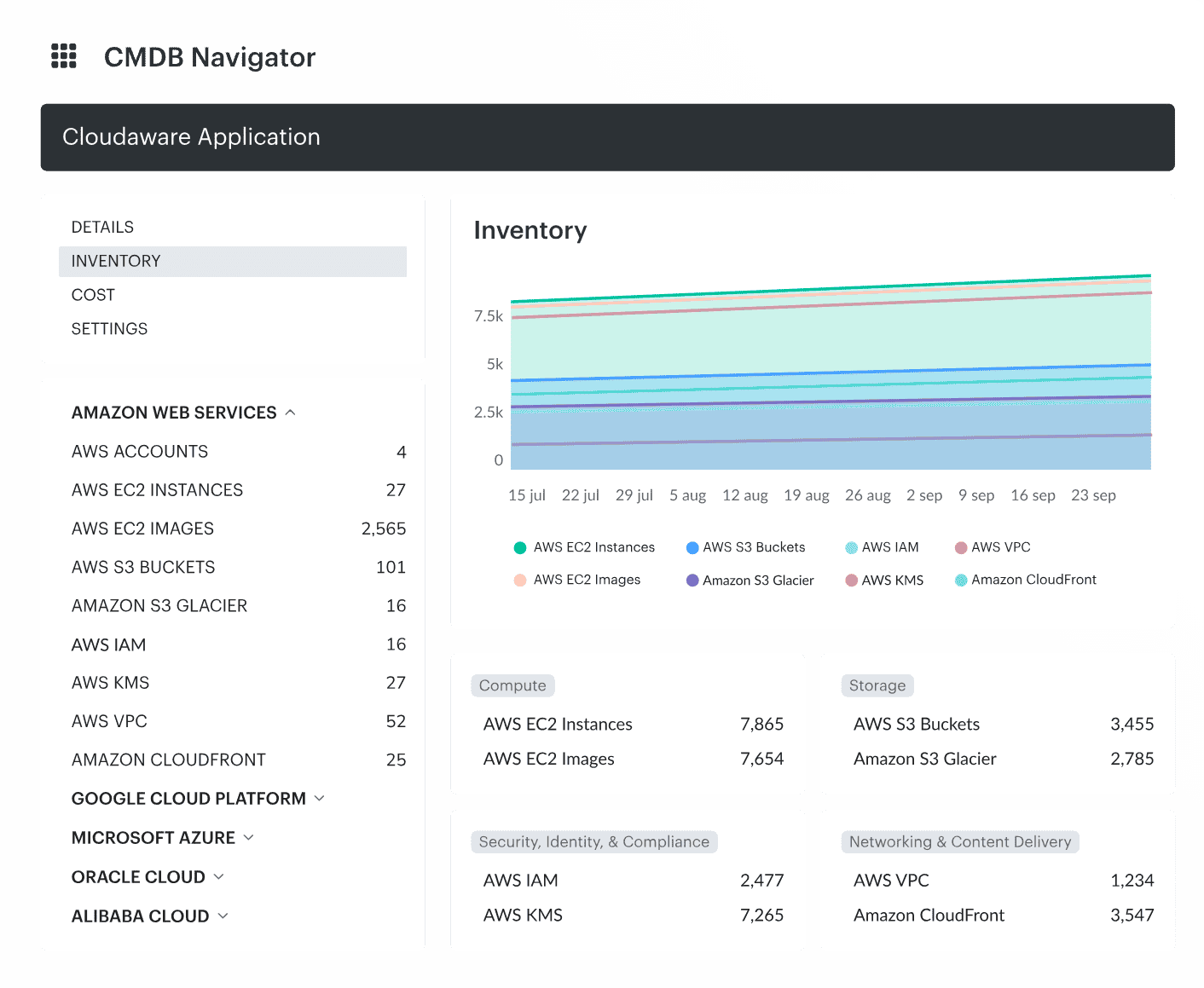
This isn’t just some vanilla asset tracker. We’re talking a CMDB ITIL powerhouse that slots right into your ITIL framework and takes on the gritty stuff your team deals with every day:
- One Source of Truth. No more piecing together fragmented asset data from multiple clouds and on-prem environments. Cloudaware centralizes all ITAM and configuration data, ensuring a real-time, accurate foundation for your tracking, security, and compliance needs.
- Zero Manual Updates. Thanks to Cloudaware Discovery and Dependency Mapping, your CMDB updates itself. New devices, software assets, and infrastructure changes? Captured instantly. No spreadsheets, no manual asset tracking — just continuous, automated data synchronization.
- Smarter CI Data. Not all configuration items are created equal. Cloudaware enriches your ITAM data to uncover hidden dependencies and relationships. That means fewer blind spots, stronger security, and complete control over every IT asset.
- Seamless Integrations. Plug Cloudaware into your existing asset management and security tools using open APIs. Whether it's integrating with ITSM platforms or pulling external data for deeper insights, Cloudaware keeps everything connected and automated.
- Instant Reporting & Analytics. Need a report? Done. Cloudaware delivers real-time insights on demand, without the headache of manual report-building. Track ITAM performance, optimize software asset usage, and strengthen security with clear, actionable data.
So yeah — no more fragmented data, half-updated spreadsheets, or last-minute Slack panics before audits. This is ITIL CMDB software that lets your crew work smarter, cut down on firefighting, and finally keep ops humming even across a jungle of accounts and clusters.
